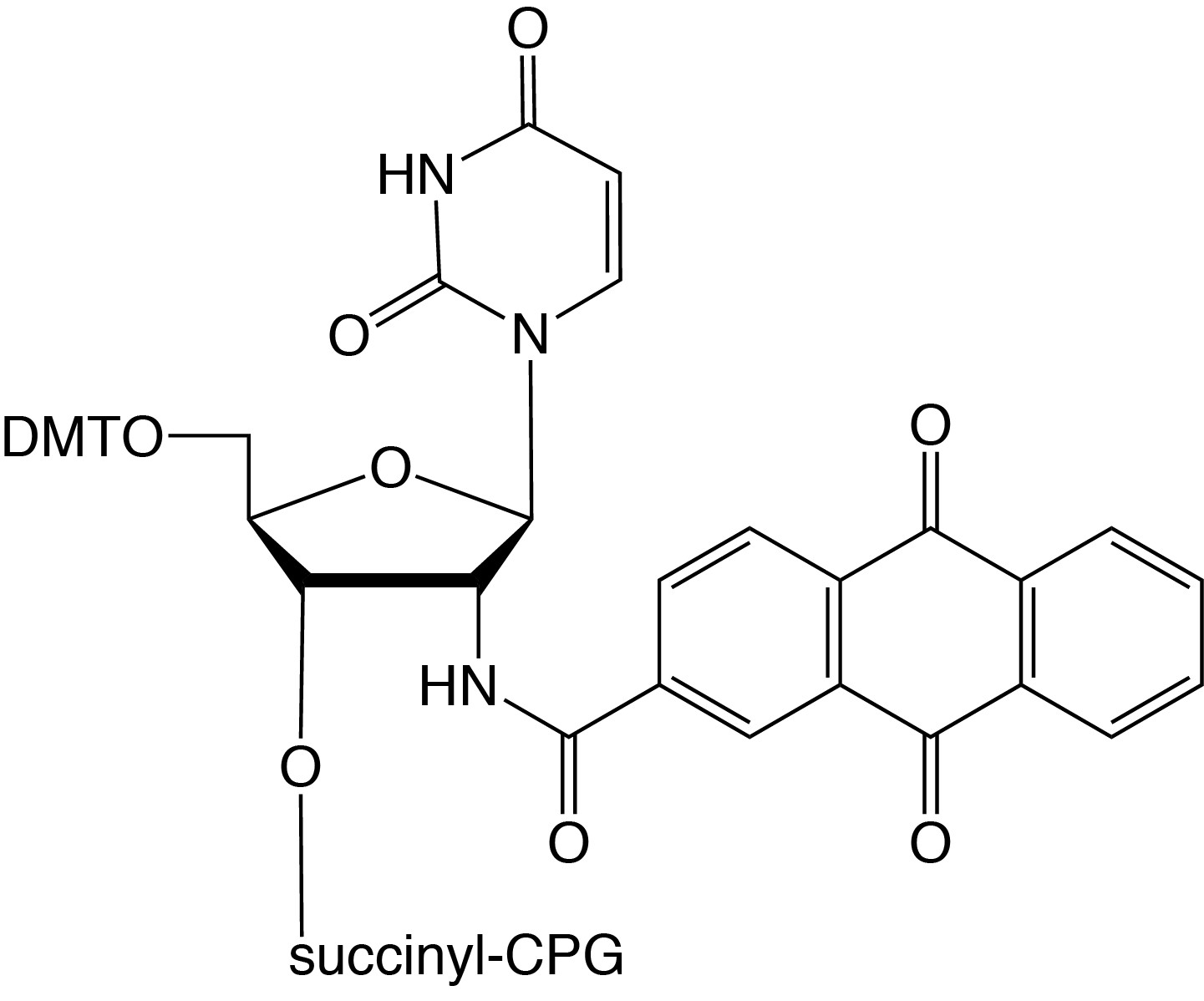
Catalog Number: 20-2980-xx
Description: 3'-Uaq Cap CPG
5'-Dimethoxytrityl-Uridine, 2'-(anthraquinone-2-yl-carboxamido)-
3'-succinoyl-long chain alkylamino-CPG |
|
|
F.W.: 476.42 |
Diluent: Not Applicable |
| Coupling: This support should be used in a manner identical to normal protected nucleoside support since it contains the DMT group. |
| Deprotection: As required by nucleobases. Compatible with Ammonium Hydroxide for 17 hours at room temperature, Ammonium hydroxide/40% methylamine 1:1 (AMA) for 10 minutes at 65°C or UltraMild deprotection conditions. |
| Storage: Freezer storage, -10 to -30°C, dry |
| Stability in Solution: Not Applicable |
Locked Nucleic Acid (LNA™) Phosphoramidites
Locked Nucleic Acid (LNA) phosphoramidites have been discontinued.
|
|
Caps for Increased Duplex Stability and Base-Pairing Fidelity at Termini
New cap structures allow for the preparation of hybridization probes with increased affinity for complementary sequences. The monomers used to prepare capped oligonucleotides are phosphoramidites that can be readily introduced via automated DNA synthesis at the end of solid phase syntheses. The caps favor the formation of stable Watson-Crick duplexes by stacking on the terminal base pair (Figures 1 and 2).
|
|
|
FIGURE 1: STACKING OF CAP ON TERMINAL BASE PAIR
|
FIGURE 2: STACKING OF Uaq CAP ON 3’ TERMINAL BASE PAIR
|
Melting point increases of over 10 °C per modification can be realized for short duplexes.1,2 The caps fit canonical Watson-Crick base pairs and do not stack well on mismatched base pairs. This leads to increased base pairing selectivity at the terminal and the penultimate position of oligonucleotides featuring the caps. Base pairing fidelity is usually low at the termini, where fraying occurs frequently in the absence of caps. The beneficial effects of the caps are also realized when longer target strands are bound, so there is no need for blunt ends for the duplexes formed.1,2 The caps, when attached to the 5’ terminus of an oligonucleotide, also facilitate purification as their lipophilicity leads to prolonged retention on reversed phase columns or cartridges. Finally, capping of termini may discourage the degradation of oligonucleotides by exonucleases.
3’-Uaq Cap CPG, a Uridine support modified with a 2’- anthraquinone residue, is the most effective oligonucleotide cap known to date.3,4 For short hybrid duplexes between DNA probes and RNA target strands, the increase in Tm is up to 18 °C and the modification is effective in increasing the Tm of DNA:DNA, RNA:RNA, and DNA:RNA hybrid duplexes. 3’-Uaq Cap also increases probe specificity by depressing the melting point of terminal mismatches.
|
If you cannot find the answer to your problem then please contact us or telephone +44 (0)1954 210 200